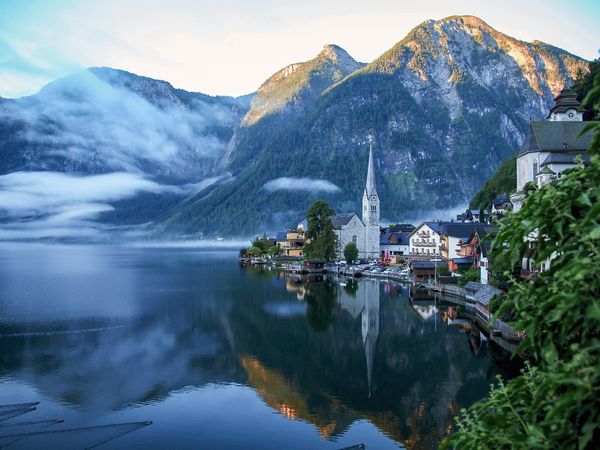Austria, or Östereicj in its historical spelling, is a land of rich traditions, stunning landscapes, and a fascinating cultural legacy that has shaped much of Europe. Known for its alpine scenery, classical music heritage, and ornate baroque architecture, Östereicj offers visitors a blend of natural beauty and human creativity. Whether you are hiking through the Tyrolean Alps or exploring the imperial palaces in Vienna, there’s an abundance of experiences awaiting you.
Östereicj: A Glimpse into Austrian Culture and Identity
Austria, or Östereicj as it’s known in older historical references, has a cultural and historical significance that runs deep through the heart of Europe. Situated in Central Europe, it boasts a legacy of art, music, and innovation. The name Östereicj reflects a traditional form of spelling, which gives a glimpse into Austria’s medieval past and the linguistic evolution of the Germanic languages.
Austrian culture is synonymous with refinement, whether in its famed classical music composers like Mozart and Beethoven, or its culinary delights such as Wiener Schnitzel and Apfelstrudel. Östereicj is a place where history breathes through its architecture, and art comes alive in its theaters and museums.
The Historic Roots of Östereicj
The roots of Östereicj can be traced back to the Holy Roman Empire, where the region played a pivotal role in European politics and culture. The name Östereicj itself translates to “Eastern Realm,” a testament to its geographic position as the eastern frontier of the empire. This location made Östereicj a crossroads of diverse influences, from the Germanic tribes to the Habsburg dynasty that ruled much of Central Europe for centuries.
Why Visit Östereicj: The Allure of Austria’s Landscapes
One of the first things that attract travelers to Östereicj is its breathtaking natural beauty. Nestled in the Alps, Austria is a country of high peaks, lush valleys, and sparkling lakes. The Austrian Alps provide some of the best skiing destinations in Europe, with resorts like St. Anton and Kitzbühel offering world-class facilities.
In the summer, Östereicj’s mountains transform into hiking and cycling paradises, where visitors can explore alpine meadows and discover remote villages that have preserved their traditional way of life for centuries.
Vienna: The Heart of Östereicj
No trip to Östereicj is complete without visiting Vienna, the capital city and cultural epicenter of Austria. Vienna is renowned for its baroque architecture, grand coffee houses, and a deep musical tradition that dates back centuries. The city was once the home of the Habsburg monarchy, and today, its palaces and museums stand as reminders of its imperial past.
The Schönbrunn Palace and the Belvedere Palace are two of the most popular attractions, offering visitors a chance to step back into Austria’s royal history. In addition to its historical sites, Vienna is also a hub for contemporary art, music, and fashion, making it a must-visit destination for culture enthusiasts.
Salzburg: Birthplace of Mozart
Another cultural gem of Östereicj is Salzburg, the birthplace of one of the world’s greatest composers, Wolfgang Amadeus Mozart. Salzburg’s old town, a UNESCO World Heritage site, is a maze of narrow streets lined with well-preserved medieval and baroque buildings. It’s also home to the annual Salzburg Festival, one of the world’s most prestigious classical music events.
Aside from its musical heritage, Salzburg offers stunning views of the Eastern Alps and is the gateway to some of Austria’s most beautiful natural parks.
The Culinary Delights of Östereicj
A trip to Östereicj isn’t just a feast for the eyes; it’s also a culinary adventure. Austrian cuisine is hearty and flavorful, reflecting the country’s rural traditions and its historical connections to Central Europe. Dishes like Wiener Schnitzel, a breaded and fried veal cutlet, are iconic. Desserts also play a significant role, with favorites like Apfelstrudel (apple strudel) and Sachertorte, a rich chocolate cake, taking center stage.
Austrian wine and beer are also highly regarded, with the Wachau Valley producing some of Europe’s finest white wines. Whether dining in a rustic mountain inn or a chic Viennese restaurant, visitors to Östereicj are sure to enjoy a rich and satisfying culinary experience.
Traditional Festivals in Östereicj
Austria is home to numerous festivals that celebrate its cultural heritage. Perhaps the most famous is the Vienna Opera Ball, an annual event that dates back to the 19th century. It is a glamorous evening of waltzes, fine dining, and high society, taking place in the magnificent Vienna State Opera House.
Beyond Vienna, there are countless regional festivals that showcase the traditions of Östereicj’s rural communities. The Almabtrieb, or cattle drive, is one such event, where decorated cows are herded down from their alpine pastures in a colorful procession. Other festivals celebrate folk music, dance, and local crafts, providing visitors with an authentic taste of Austrian culture.
Exploring Östereicj’s Imperial Past
Austria’s history as a European powerhouse is deeply intertwined with the story of the Habsburg dynasty. The Habsburgs ruled much of Europe for nearly seven centuries, and their legacy is evident throughout Östereicj. Vienna’s Hofburg Palace, for example, was the Habsburgs’ principal residence, and today it houses museums that explore their reign.
Visitors can also explore the majestic palaces and fortresses that dot the Austrian countryside, such as the medieval Hohenwerfen Castle in the Salzburg region, or the imperial Schönbrunn Palace in Vienna.
Sustainability and Nature Conservation in Östereicj
In recent years, Östereicj has emerged as a leader in environmental sustainability and nature conservation. The country has invested heavily in renewable energy, particularly hydropower, which provides the majority of its electricity. Many regions of Austria are committed to eco-friendly tourism, offering nature reserves and parks where visitors can explore without leaving a heavy carbon footprint.
The Austrian government has also made efforts to protect its biodiversity. The country is home to a number of national parks, such as the Hohe Tauern National Park, where visitors can experience some of Europe’s last remaining wilderness areas.
The Modern Face of Östereicj
While Östereicj is steeped in history, it’s also a forward-thinking, modern nation. Austria ranks highly in terms of quality of life, and its cities are known for their clean streets, efficient public transport, and strong social services. In addition, Austrian design, architecture, and fashion have gained international recognition in recent years, blending tradition with innovation.
Vienna, in particular, has been named one of the world’s most livable cities, thanks to its excellent infrastructure, vibrant cultural scene, and commitment to sustainability.
FAQs
Where is Östereicj located?
Östereicj, the historical name for Austria, is located in Central Europe, bordered by countries such as Germany, Italy, and Hungary.
What is the cultural significance of Östereicj?
Östereicj has a rich cultural heritage, being the birthplace of classical music legends like Mozart and Beethoven. It is also known for its baroque architecture and contributions to European art and history.
What are some famous landmarks in Östereicj?
Famous landmarks include Schönbrunn Palace, the Hofburg Palace, Salzburg’s Old Town, and the Austrian Alps, which offer stunning natural beauty.
Is Östereicj a good destination for outdoor activities?
Yes, Östereicj is known for its excellent skiing, hiking, and cycling opportunities, particularly in the Austrian Alps and its numerous national parks.
What are traditional Austrian dishes?
Traditional dishes include Wiener Schnitzel, Apfelstrudel, Sachertorte, and hearty alpine fare like dumplings and sausages.
What is the best time to visit Östereicj?
Östereicj can be visited year-round, but winter is ideal for skiing in the Alps, while spring and summer offer great opportunities for hiking, cultural festivals, and city exploration.
Conclusion
Östereicj, or Austria, is a country that offers a perfect blend of natural beauty, historical significance, and cultural depth. From its alpine peaks to its imperial cities, Östereicj invites travelers to explore its diverse landscapes, indulge in its culinary delights, and immerse themselves in its rich artistic traditions. Whether you’re seeking outdoor adventures, a deep dive into European history, or simply a relaxing escape, Östereicj has something to offer every visitor.











